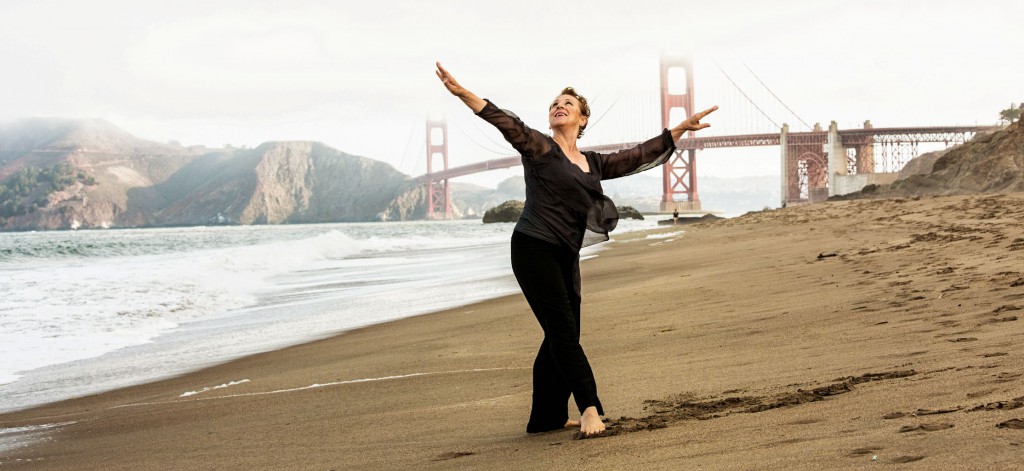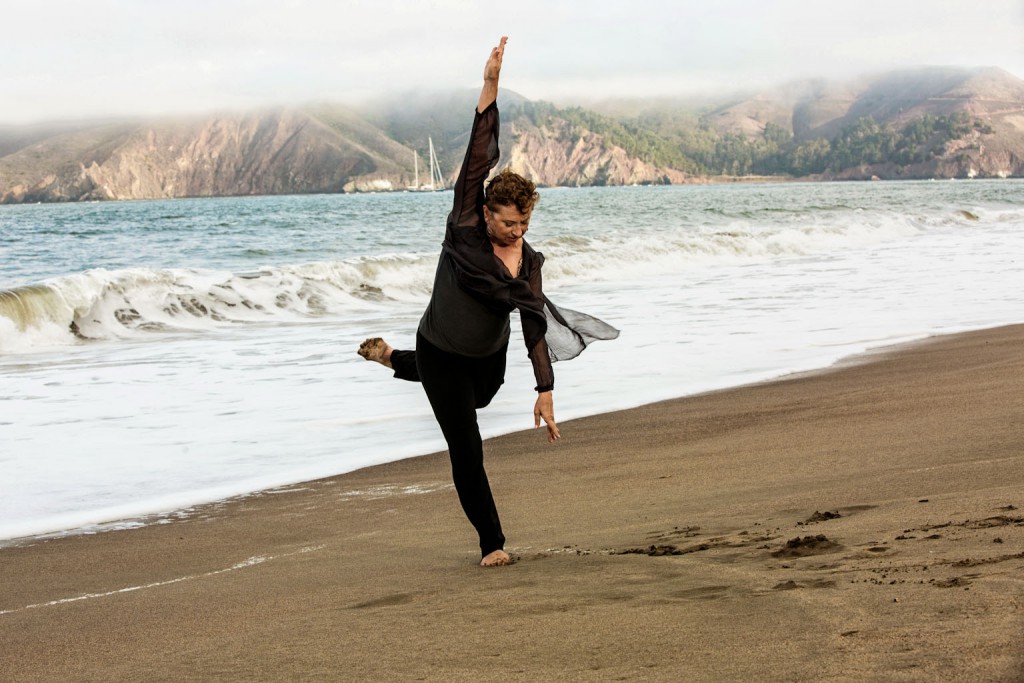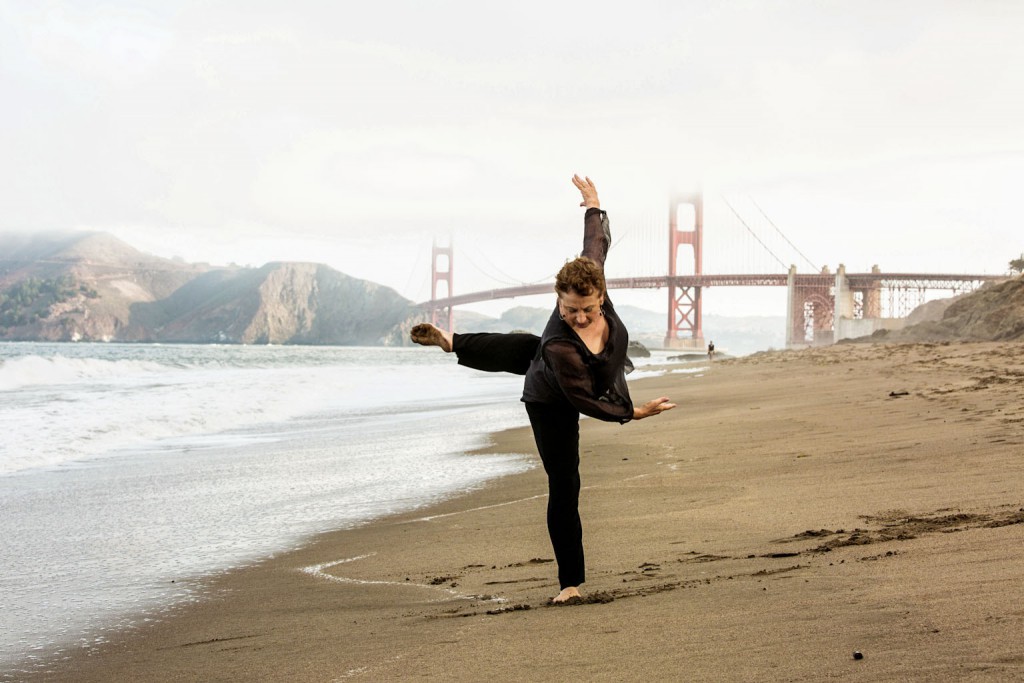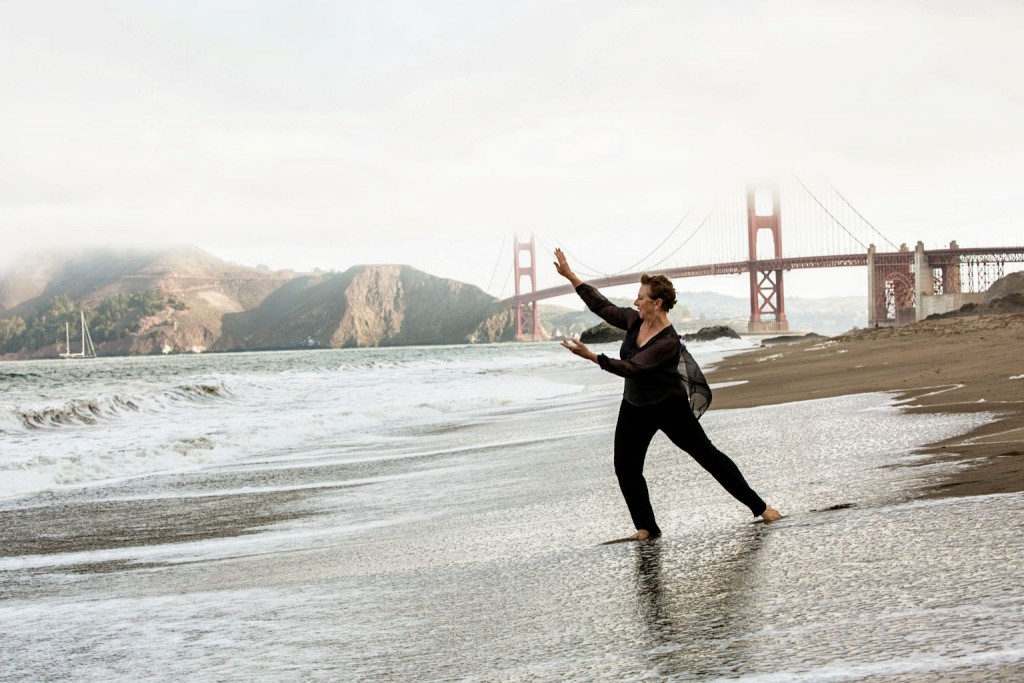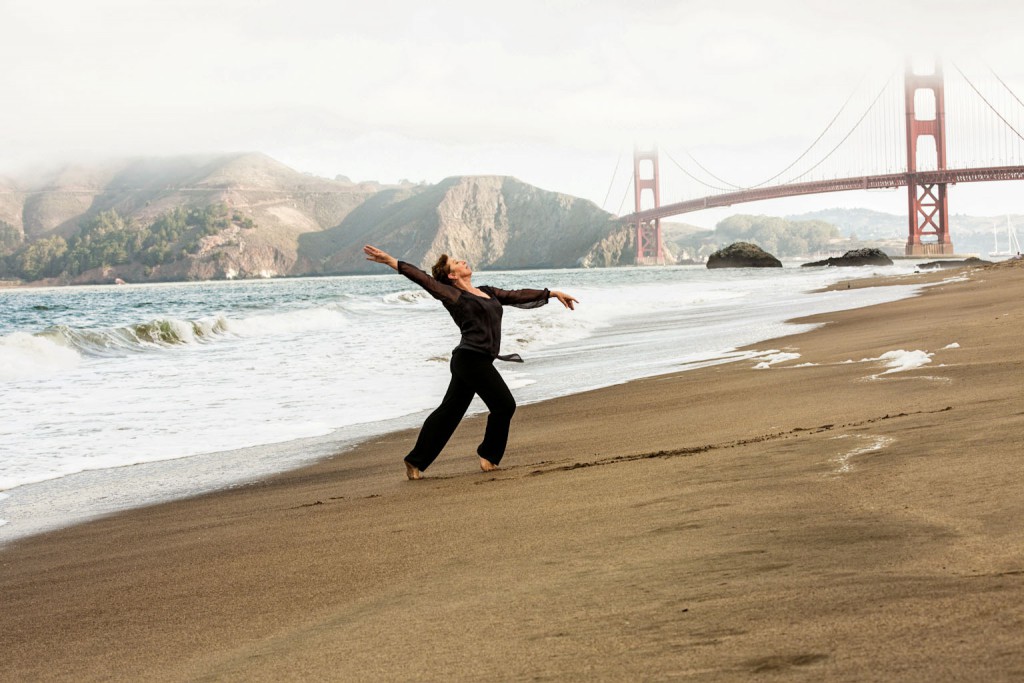Balance is Not a Still Point: An Interview with Valerie Baadh Garrett
BY EMMALY WIEDERHOLT; PHOTOGRAPHS BY GREGORY BARTNING
It was one of those serendipitous mornings in San Francisco when the fog half lifts over the Golden Gate Bridge, casting an effervescence on the surrounding beaches. Valerie dived into movement the way a wave dives into itself. The sand rode the pull of the tide, the fog hovered above the cliffs, and Valerie smiled and swooped her arms. She was a living painting.
This interview is from the book “Beauty is Experience: Dancing 50 and Beyond.” Click here to learn more about the book, or click here to order your own limited edition copy!
~~
When did you start dancing and what have been some highlights along the journey?
I was born into a family of musicians. I never played an instrument; I just moved to the music all around me. Growing up in Los Angeles, I had access to wonderful teachers. When my family moved out to the desert, there was not a lot of dance to take advantage of. In junior high, Angiola Sartorio from the Jooss Company in Germany came and taught classes at the local trailer park. When my family moved back to Los Angeles, I started studying ballet, and also studying modern dance with Bella Lewitzky. When Bella became the dance director at Cal Arts, she invited me to apply.
Some of my fellow graduates from Cal Arts and I moved to San Francisco together to work as dance artists. It was during this time I met my husband and started a family. Along the way, I started to have questions about dance. Then I was injured during my daughter’s birth, and ended up stopping dancing for nine years. It was a very conscious stop. I didn’t know where I was going with it and didn’t see the value beyond my own self-expression.
Through my children, I found the Waldorf School, and discovered they needed movement teachers. Lured by the idea of getting paid to teach movement, I learned the Waldorf vocabulary of Spacial Dynamics® . I came to understand movement has a larger reason for being; it helps develop our brains, bodies and social connections. In the process of working for the Waldorf School, I became a movement therapist. I currently travel around the world training teachers how to use movement for learning.
I developed a curriculum tying dance to history. Through my research, I found my way to Richard Powers and the dance community at Stanford University. It was through this that I came to audition for the Academy of Danse Libre, a company that performs vintage ballroom.
I’ve been performing with Danse Libre for nine years, and I’m by far the oldest dancer. It’s the hardest dancing I’ve ever done in my life. It’s really fun and very social, but I have to keep up. I don’t get any slack for being the oldest.
What does your current dance practice look like?
My goal in life at the moment is to continue to perform with Danse Libre for as long as I can. I have to be in fairly good shape to keep up, so I go to the gym three times a week. I don’t take many classes any more, but I do aspects of yoga, Pilates and floor barre as part of my personal workout.
How has your motivation to dance changed over time?
For me, it’s the connection to music and the intersection of movement with rhythm and melody. Even when I was in the world of modern dance and ballet and was tortured with not feeling good enough, I always looked for just that one moment of transcendence, like the way the hand moves to the ritardando of the music. Those little moments are why I dance.
What does the idea of success mean to you?
I’m certainly not doing what I thought I was going to do; I’m not the artistic director of a modern dance company. I worked so hard to get “there.” And when I got so I could see it, I realized there was no “there.” My definition of dance is different than it used to be. The fact that I can enter movement, engage movement, lead movement and guide others in movement is a huge gift I use in my work all around the world, whether teaching, giving a lecture, or educating seniors in fall prevention. I feel very successful in that I still dance and love it, even though I had to come back to it with a new relationship.
What do you perceive is your legacy?
Through my movement therapy work, I come into contact with a lot of people who are afraid of dance. In my journey, I went from elite ballet training to fundamental movement patterns in a newborn baby. What do people need in the world? They need help moving… how to take the next step, either physically or emotionally.
Is there a circumstance that would cause you to stop dancing? I imagine there will be a time when I’ll stop performing. I’ll stop putting on my false eyelashes and big costumes and going out onstage in front of an audience. I hope to choose when I stop and not have it be chosen for me.
But I’ll never stop dancing. There’s movement on your deathbed as you cross the threshold.
What advice would you give to a younger generation of dancers?
I was working with a young woman this past week who reminded me a lot of myself when I was younger. She went to dance school, dropped out of college and is now working as a nanny. I finally asked her about her goals, and she told me she wants to start a dance company. I told her what I wish someone had told me, though I would have rejected it. I told her she has a great gift in that she loves movement. Not all people have the gift of joy in movement. There are careers to share that gift, but they require training and school. Look into occupational or physical therapy. You can still be a dancer. You can share your gift of movement and still have a life for yourself. There are many ways to share your gift with the world.
Any other thoughts?
I remember asking Bella Lewitzky, “You have it all – a dance company, dean of a dance college, a family – how did you do it?” She told me: “You can’t do it all at the same time. Take time to do what you need to do.” Balance in life is not a still point. Balance is an integration of forces moving and swirling. You can take time to be sick, to have a marriage, to go on vacation, and still be a dancer.
~~
Valerie Baadh Garrett trained in Los Angeles with Bella Lewitzky and at Eugene Loring’s American School of Dance before gaining early admission to the first dance program at Cal Arts. After moving to San Francisco, she worked as a dancer, choreographer, director and producer. After 15 years on the faculty of the San Francisco Waldorf School, she has become an international teacher trainer. Valerie is also a movement therapist (RSMT /Waldorf Spacial Dynamics®), and founded Agile Aging and The Movement Academy Project. Valerie also performs in the vintage ballroom dance ensemble, The Academy of Danse Libre.
This interview is from the book “Beauty is Experience: Dancing 50 and Beyond.” Click here to learn more about the book, or click here to order your own limited edition copy!

